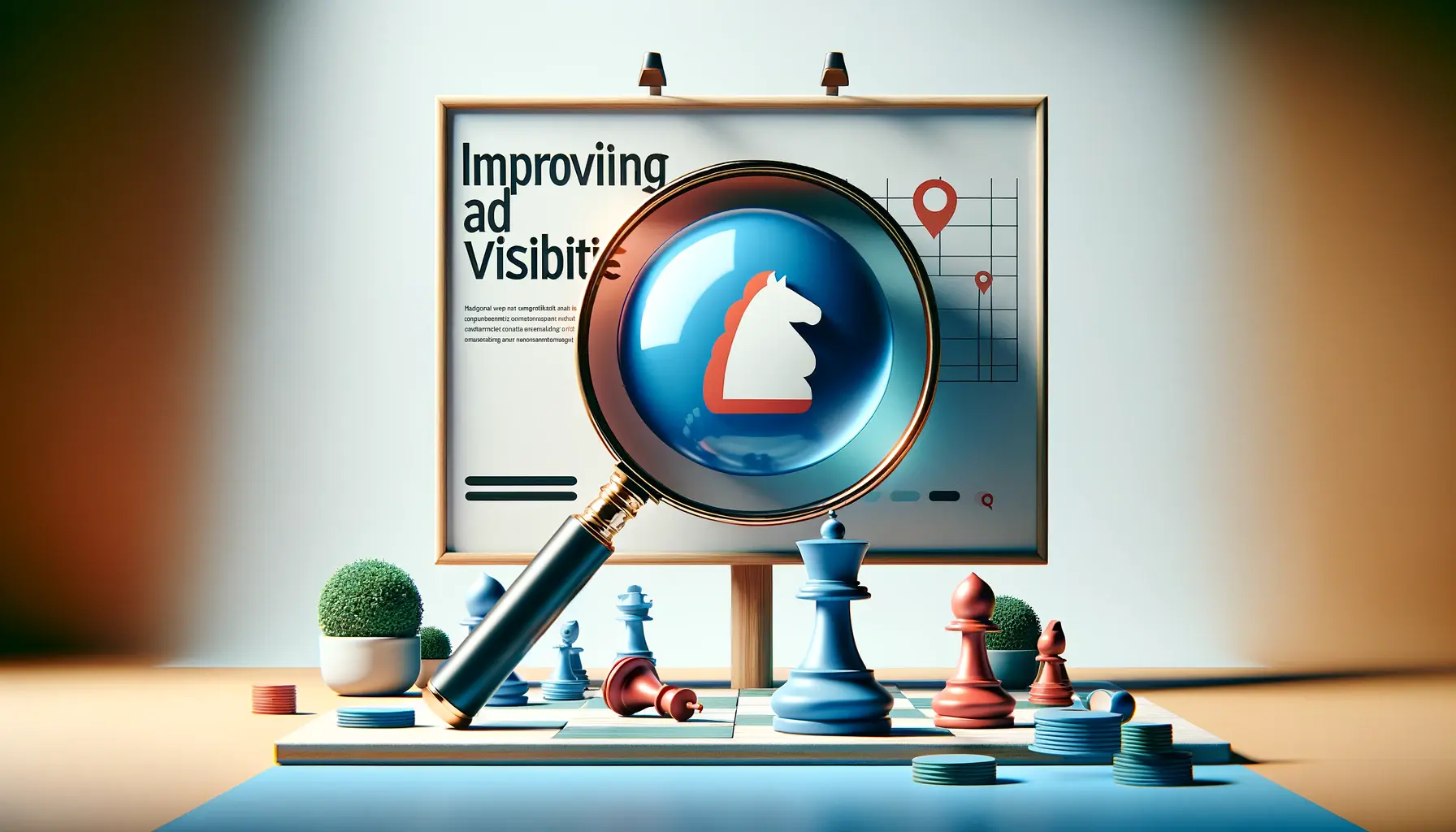In the competitive world of digital marketing, standing out in Google’s Display Network can be overwhelming.
With millions of active advertisers competing for attention, making sure your ads are seen to their full potential is no longer optional but a must.
This article dives deep into six powerful visibility strategies that will make your Google Display Ads not only seen but remembered.
By the end, you’ll have actionable insights to elevate your campaigns to new heights.
- Understanding Google Display Ads Visibility
- Optimizing Ad Placements for Maximum Visibility
- Enhancing Visibility with Creative Design
- Leveraging Bidding Strategies to Improve Visibility
- Tracking and Improving Visibility Performance
- Mastering Visibility Strategies for Google Display Ads
- Frequently Asked Questions About Visibility Strategies
Understanding Google Display Ads Visibility
Visibility in Google Display Ads refers to how well your ads are seen by your target audience.
It’s not just about your ad being displayed; it’s about ensuring that the right people see it in the right context.
Without visibility, even the most visually stunning ads can fail to deliver results.
But what exactly does visibility mean in digital advertising?
It’s more than impressions—it’s about meaningful exposure.
A visible ad captures the attention of your audience and inspires them to take action.
Let’s explore this concept in more detail.

A modern representation of ad visibility in digital advertising.
What is Visibility in Google Display Ads?
Visibility measures whether an ad is likely to be seen by users.
For a simple ad, Google describes ‘viewabilityA metric that measures whether an ad was visible to users according to defined standards.‘ as an ad where more than 50% of its pixels are in view for one second for display ads and for two continuous seconds for video ads.
The better the viewability rate of the ad, the stronger its potential for influencing user response.
Think of visibility as the foundation of your campaign’s success.
If your ad isn’t visible, it can’t generate clicks, conversions, or brand awareness.
Understanding this metric is crucial for optimizing your ad performance.

A vivid depiction of the impact of ad visibility on campaign success.
Why Visibility is Crucial for Campaign Success
Without visibility, your ads are simply wasting budget.
High visibility ensures your target audience sees your message, increasing the likelihood of engagement.
This directly impacts:
- Brand Awareness: Visible ads reinforce your brand in the minds of your audience.
- Click-Through Rates (CTR): Users are more likely to click on ads they notice.
- Return on Investment (ROI): Visibility improves the chances of your ad driving profitable actions.
Think about it—when was the last time you engaged with an ad you barely noticed?
Visibility ensures that your ads stand out in a crowded marketplace and get a fair chance to succeed.

A detailed visualization of metrics used to measure visibility in display advertising.
Metrics to Measure Visibility in Display Advertising
Measuring visibility means tracking certain metrics that indicate whether your ads are being effectively viewed.
These include:
- Viewability Rate: The percentage of your ads that meet Google’s viewability standards.
- Impressions vs. Viewable Impressions: Not all impressions are equal; focus on the ones that are actually seen.
- Engagement Metrics: Metrics like CTR and interaction rates indicate how well users are engaging with your visible ads.
Through close monitoring, this data provides the ability to make data-driven decisions toward improving ad visibility and campaign performance.
Visibility is not just about impressions; it’s about ensuring meaningful exposure to your target audience for impactful results.

A visual representation of optimizing ad placements to ensure maximum visibility in digital marketing.
Optimizing Ad Placements for Maximum Visibility
Ad placements play a critical role in determining how visible your Google Display Ads are to your target audience.
The success of your campaigns depends not only on crafting great ads but also on ensuring they appear in the right places.
By strategically selecting placements, you can significantly increase your ad’s visibility and reach.
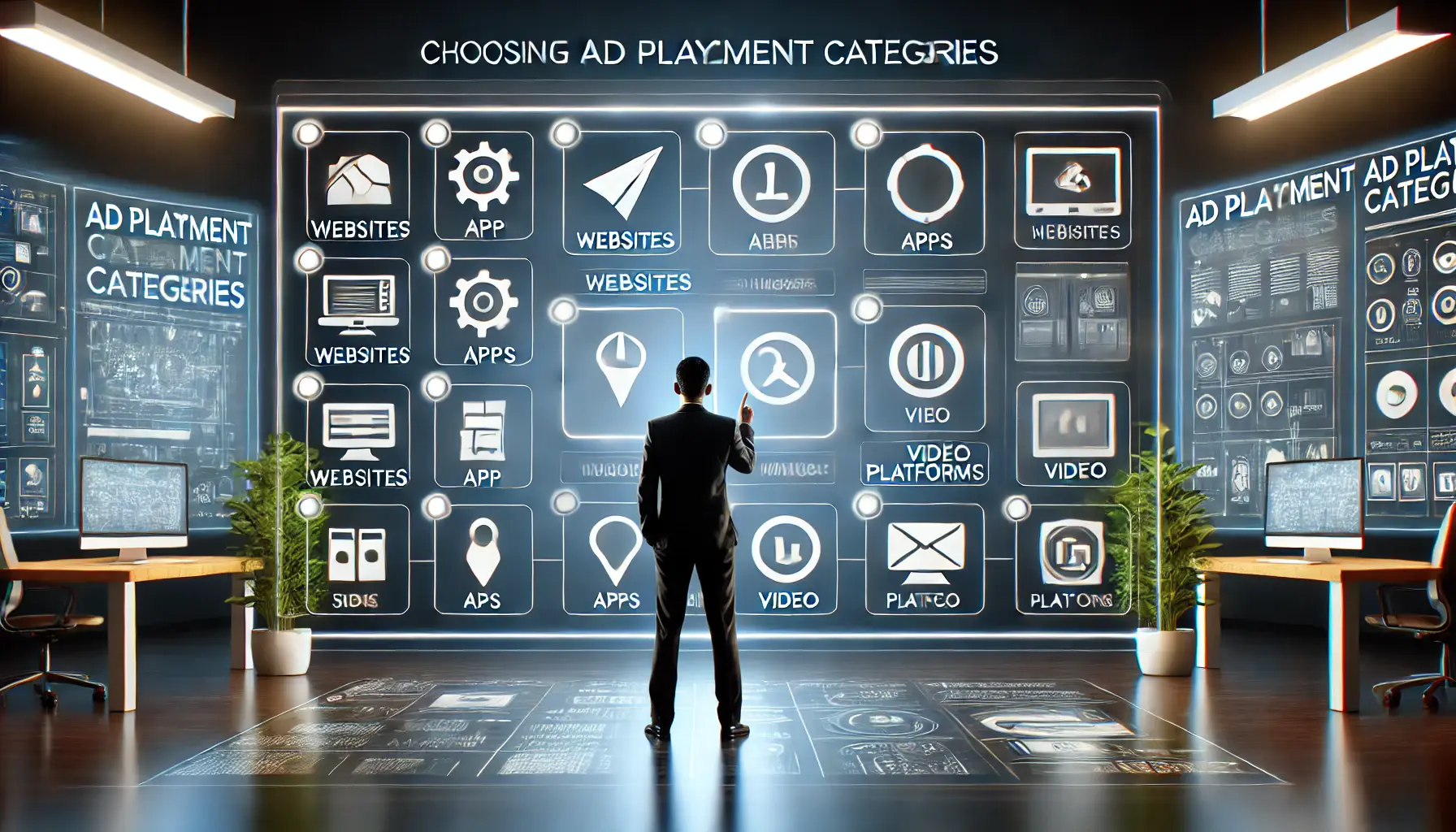
A visual representation of choosing the right ad placement categories in digital marketing.
How to Choose the Right Placement Categories
Google’s Display Network gives you a vast range of options, from websites to mobile apps and even YouTube videos.
To increase your visibility, choose placements that align with what your target audience generally uses and sees online.
Consider these tips:
- Know Your Audience: Take full advantage of audience insights to understand which platforms, websites, and apps your target users browse the most.
- Leverage Managed Placements: Handpick high-performing websites or apps where you want your ads to appear for better control and visibility.
- Exclude Low-Performing Placements: Regularly review placement performance data to exclude sites or apps with low viewability rates or poor engagement.
Choosing the right placement categories ensures your ads appear in contexts where they are most likely to stand out and drive results.

A visual representation of audience targeting in improving ad visibility.
The Role of Audience Targeting in Visibility
Effective audience targeting goes hand in hand with placement optimization.
By defining your target audience precisely, you can ensure your ads are served to users most likely to engage with them.
Consider these strategies:
- Demographic Targeting: Tailor placements based on age, gender, income level, or other demographic factors.
- Affinity Audiences: Use affinity audiences to reach users with established interests relevant to your products or services.
- Custom Intent Audiences: Create custom audiences based on keywords, apps, or URLs your potential customers interact with.
Proper audience targeting helps your ads appear in front of users who are more likely to notice and engage with them, improving overall visibility.

A visual representation of avoiding low-visibility ad placements in digital marketing.
Avoiding Low-Visibility Placements
Not all placements are created equal, and some may harm your campaign’s viewability.
To avoid low-visibility placements, follow these tips:
- Use Placement Exclusions: Discard irrelevant or poor-performing placements by using Google Ads’ exclusion capabilities.
- Monitor Placement Reports: Regularly review your placement reports to flag sites or apps with poor viewability metrics or low audience engagement.
- Shun Over-Saturated Categories: Avoid overly competitive or cluttered categories where your ads may get lost among competitors.
By proactively managing your placements, you can ensure your ads appear on high-quality platforms that maximize visibility and deliver value for your investment.
- Focus on high-performing placements to improve viewability metrics.
- Regularly review and exclude low-visibility placements for better campaign performance.

A visual representation of enhancing ad visibility through creative design in digital marketing.
Enhancing Visibility with Creative Design
Creative design is the heart of any successful Google Display Ads campaign.
A visually appealing and strategically designed ad captures attention and ensures your message resonates with the target audience.
When your ad design aligns with user expectations and stands out on the Display Network, visibility naturally improves.
Let’s explore how creative design can elevate your ad performance.

A visual representation of the importance of visual appeal in creating effective ad designs.
The Importance of Visual Appeal in Ad Design
First impressions mean everything, especially in the digital landscape, where ad blindness is common.
A great-looking ad can make a user stop mid-scroll and engage with it.
Some key components of visually striking ads include:
- Bright Colors and Contrast: Use brand colors complemented by contrasting shades to make the ad pop.
- High-Quality Images: Blurry or pixelated images can harm credibility. Always use high-resolution visuals.
- Readable Fonts: Ensure your text is legible, even on smaller screens.
Remember, your ad design should not only grab attention but also communicate your message effectively.

A visual representation of the design process for high-impact display ads.
Best Practices for Designing High-Impact Display Ads
Creating high-impact display ads involves balancing creativity with strategy.
Follow these best practices to ensure your ads achieve maximum visibility:
- Keep It Simple: Avoid clutter and focus on one clear message.
- Incorporate Your Logo: Ensure your brand is always represented via your logo for recognition and trust.
- Strong Call-to-Action (CTA): Use action-oriented phrases like “Learn More” or “Shop Now” to guide users.
- Test Different Sizes: Design ads in multiple sizes to ensure compatibility across various placements.
- Use Animation Wisely: Animated ads can increase engagement but should not distract from your core message.
Implementing these practices ensures that your ads are not only visually striking but also optimized for visibility.
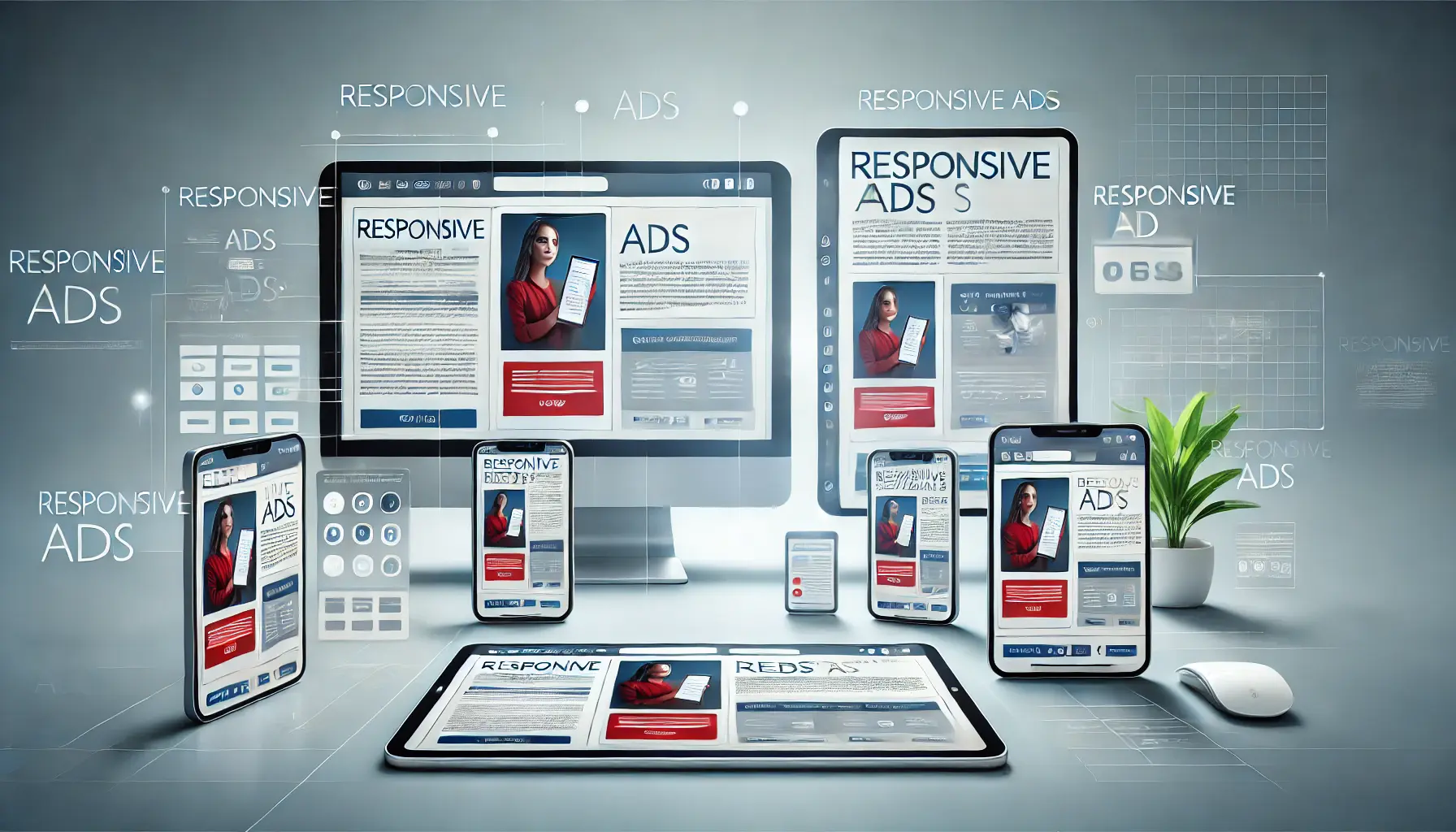
A visual representation of how responsive ads maximize reach and visibility across various devices.
Using Responsive Ads to Maximize Reach and Visibility
Responsive display ads are a game-changer for improving visibility.
These ads automatically adjust their size, format, and appearance to fit available ad spaces.
Benefits of responsive ads include:
- Broader Reach: Fit seamlessly across various devices and placements.
- Ease of Creation: Google automatically optimizes your ad for the best performance.
- Improved Engagement: Adaptability ensures users see the best version of your ad.
To create effective responsive ads, focus on providing high-quality assets, including engaging headlines, compelling descriptions, and eye-catching images or logos.
These ads not only save time but also maximize your ad’s visibility across the Display Network.
Creative design is the heart of visibility. Use vibrant colors, clear messaging, and strong CTAs to captivate your audience effectively.

A visual representation of leveraging bidding strategies to improve ad visibility in digital marketing.
Leveraging Bidding Strategies to Improve Visibility
Bidding strategies play a crucial role in determining the visibility of your Google Display Ads.
A well-chosen bidding strategy can help you outpace competitors, target high-visibility placements, and optimize your ad spend.
Understanding the different types of bidding strategies and how to use them effectively is key to improving visibility and achieving your campaign goals.

A visual representation of how automated bidding strategies can enhance ad visibility through real-time optimizations.
How Automated Bidding Can Increase Visibility
Automated bidding strategies utilize Google’s machine learning algorithms to set your bids in real time and surface your ad in high-visibility placements.
Popular automated options include:
- Target Impression Share: Focuses on showing your ad in specific positions, such as the top of the page or anywhere on the page, which greatly increases visibility.
- Maximize Clicks: Automatically adjusts bids to generate the most clicks, improving visibility by increasing ad exposure.
- Target ROAS (Return on Ad Spend): Ensures your bids are optimized to achieve the highest return while maintaining visibility in competitive placements.
Automated bidding simplifies campaign management and ensures your ads get maximum visibility on the Display Network.
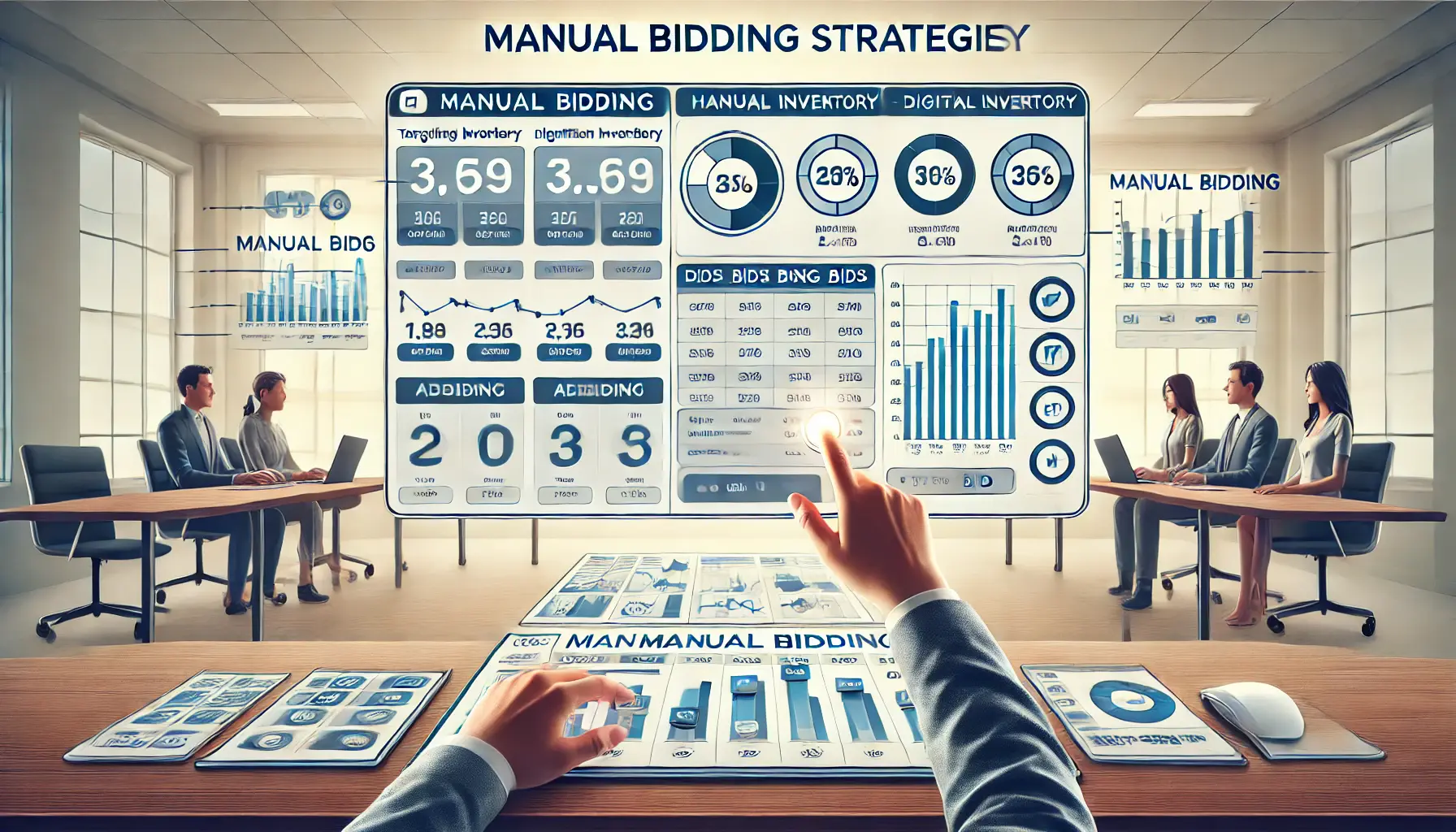
A visual representation of manual bidding strategies for targeting high-visibility inventory in digital advertising.
Manual Bidding Tips for Targeting High-Visibility Inventory
For more hands-on advertisers, manual bidding lets you set bids based on specific placements, audiences, or devices.
Here’s how you can make the most of manual bidding:
- Focus on High-Performing Placements: Increase bids for placements that have shown high engagement and visibility in the past.
- Adjust Bids by Device: Allocate higher bids to devices where your audience is most active, such as mobile or desktop.
- Leverage Dayparting: Optimize bids for times of day when your audience is most likely to see and engage with your ads.
Manual bidding requires more effort but allows for precise targeting of high-visibility opportunities.

A visual representation of how Ad Rank affects the visibility of ads in digital advertising.
Understanding the Impact of Ad Rank on Visibility
Ad Rank is a critical determinant of ad appearance.
It is computed based on your bid amount, ad quality, and the expected impact of ad extensions.
To improve your Ad RankA value calculated by Google to determine an ad's position based on bid, quality, and extensions. and increase visibility:
- Improve Ad Quality: Create engaging, relevant, and high-quality ads that align with user intent.
- Use Ad Extensions: Enhance your ads using extensions like sitelinks, callouts, and structured snippets to make them more attractive.
- Optimize Landing Pages: Ensure your landing pages are user-friendly, relevant, and aligned with the content of your ad.
By focusing on Ad Rank, you can secure higher placements in the Display Network, ensuring your ads are in front of the right audience.
Automated bidding strategies like Target Impression ShareAn automated bidding strategy aimed at maximizing ad visibility in specific positions. help secure high-visibility placements while maximizing ROI.
A visual representation of tracking and optimizing visibility performance in digital advertising.
Tracking and Improving Visibility Performance
Tracking the visibility performance of your Google Display Ads is essential to ensure your campaigns are reaching their full potential.
Visibility is not just about getting your ads seen—it’s about making sure they are noticed by the right audience in the right context.
By leveraging data and analytics tools, you can monitor your ad performance and make informed decisions to optimize visibility.

A visual representation of using Google Ads metrics to track and monitor ad visibility.
Using Google Ads Metrics to Monitor Visibility
Google Ads provides a suite of metrics that help advertisers track the visibility of their campaigns.
These key metrics include:
- Viewability Rate: The percentage of ads that meet Google’s viewability standards, ensuring that at least 50% of the ad is visible for one second (display) or two seconds (video).
- Impressions vs. Viewable Impressions: Instead of focusing solely on total impressions, prioritize viewable impressions—the number of ads that are actually seen.
- CTR (Click-Through Rate): A higher CTR generally indicates that your visible ads are creative and effectively capturing attention.
By regularly monitoring these metrics, you can develop a clearer understanding of your ads’ performance and identify areas for improvement.

A visual representation of adjusting digital ad campaigns based on visibility data for optimization.
How to Adjust Campaigns Based on Visibility Data
Visibility data is only as valuable as the actions you take with it.
Leverage your learnings to refine your campaigns for better performance using the following strategies:
- Exclude Low-Performing Placements: Remove sites or apps that consistently underperform in terms of viewability.
- Test New Placements: Experiment with different placements to discover opportunities for better visibility.
- Adjust Bidding Strategies: Increase bids for high-performing placements or reduce spending on underperforming ones.
Adapting your campaigns based on visibility metrics ensures your budget is allocated to areas that drive the most impact.

A visual representation of tools used to improve ad visibility in real-time within a digital marketing workspace.
Tools for Improving Ad Visibility in Real-Time
Several tools can help you monitor and improve your ad visibility in real time.
These tools provide actionable insights and automate processes to enhance campaign performance.
Popular options include:
- Google Ads Real-Time Reporting: In-depth, detailed reporting on visibility metrics helps you manage your campaign more effectively and timely.
- Third-Party Analytics Tools: Tools like Moat and DoubleVerify offer additional insights into visibility and provide fraud detection capabilities.
- Heatmaps and Eye-Tracking Software: Platforms like Crazy Egg or Hotjar can help you understand user behavior and refine your ad placement strategies.
By applying these tools, you can proactively monitor and improve the visibility of your ads, ensuring better performance across the Display Network.
- Regularly track viewability metrics like impressions vs. viewable impressions to refine your ad strategy.
- Leverage tools like Google Ads reporting and third-party analytics for real-time adjustments.
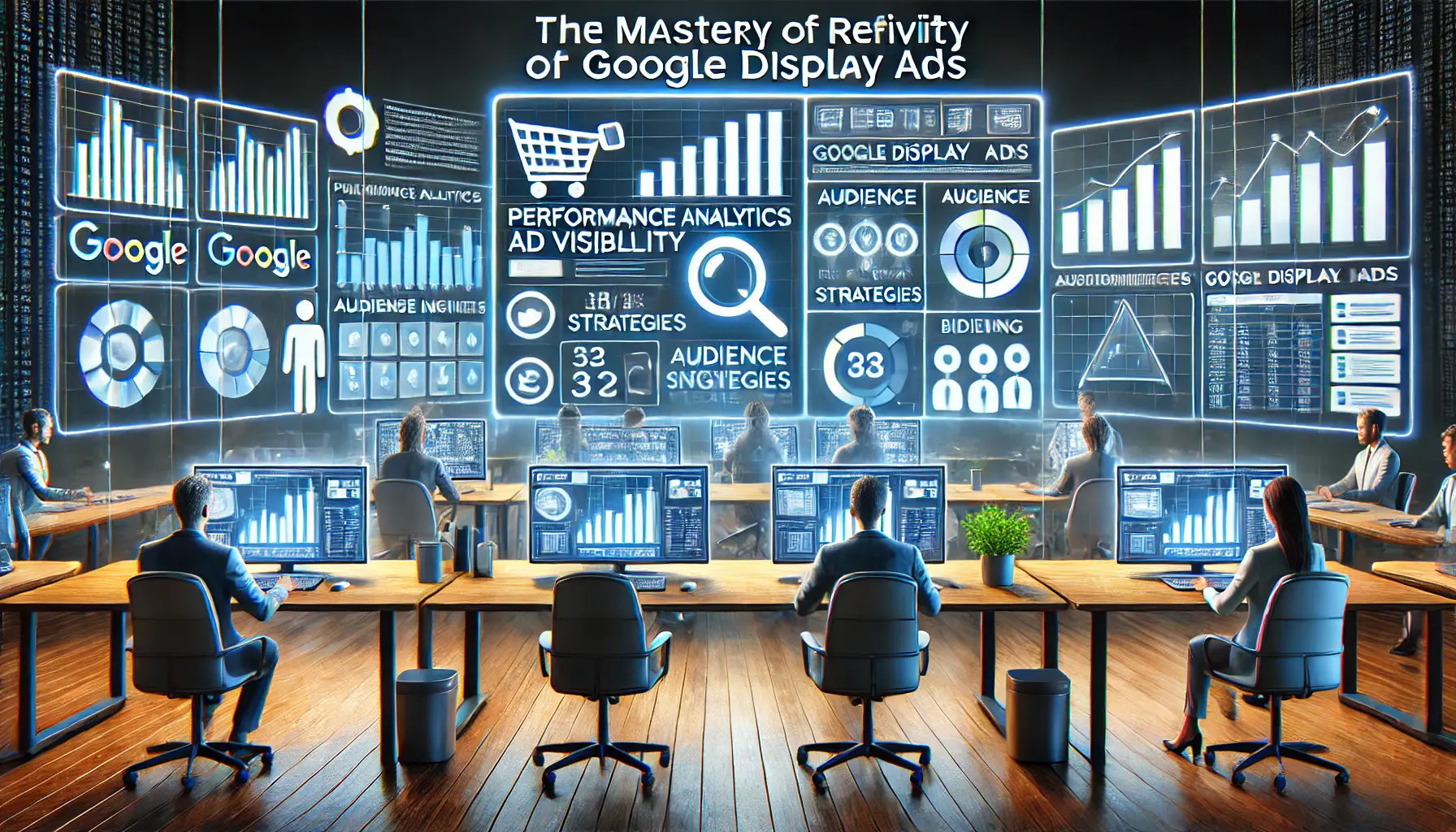
A visual representation of mastering visibility strategies for Google Display Ads in a digital workspace.
Mastering Visibility Strategies for Google Display Ads
Achieving maximum visibility in Google Display Ads is a dynamic process that combines strategic planning, creative design, and data-driven decision-making.
By mastering visibility strategies, advertisers can ensure their campaigns not only reach the right audience but also drive meaningful engagement and conversions.
Let’s recap the essential takeaways from this article.

A visual representation of the building blocks that contribute to successful ad visibility.
The Building Blocks of Ad Visibility
When setting up your Google Display Ads, pay close attention to key factors that influence visibility.
These include:
- Optimized Placements: Carefully select and manage ad placements to ensure your ads appear where your audience is most active.
- Creative Design: Invest in eye-catching, clear ad designs that capture attention and effectively communicate your message.
- Bidding Strategies: Use automated or manual bidding techniques to outpace competitors and target high-visibility opportunities.
- Performance Tracking: Leverage Google Ads metrics and advanced tools to monitor and improve ad visibility in real time.
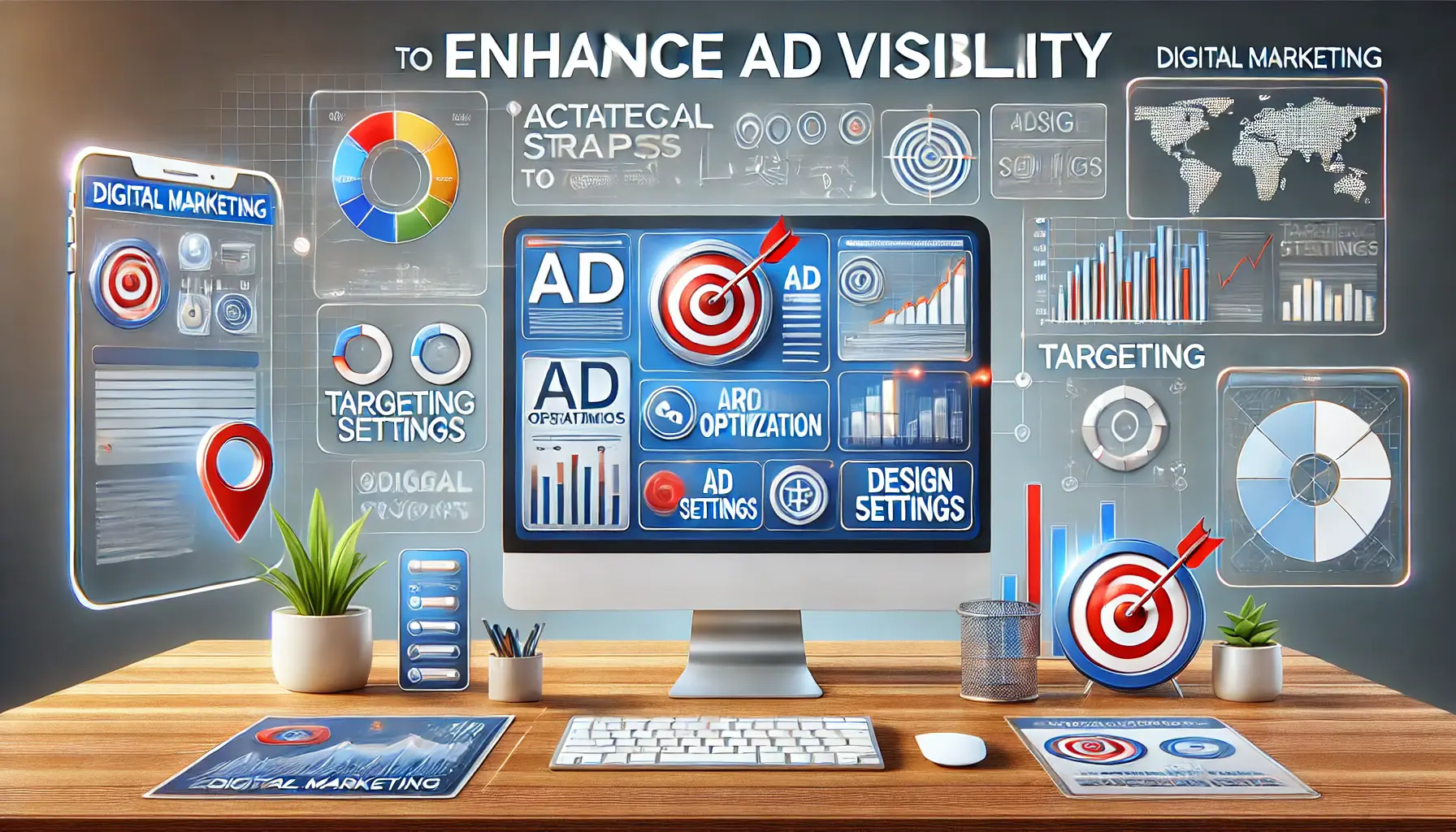
A visual representation of actionable tips and strategies to improve ad visibility.
Actionable Tips to Enhance Visibility
Applying the following actionable tips can help you implement visibility strategies more effectively:
- Use responsive ads to adapt to various device sizes and placements for broader reach.
- Regularly check viewability metrics to focus on ads that generate the most engagement.
- Better target your audience to ensure that ads reach the right users in the right context.
- Continuously test and refresh creative designs to stay relevant and appealing to your target audience.
- Leverage advanced tools like Google Ads reporting and third-party analytics for real-time insights and optimization.

A visual representation of the importance of visibility strategies in digital advertising campaigns.
Why Visibility Strategies Matter
In today’s competitive digital landscape, visibility forms the foundation of effective advertising.
Without it, even the greatest ads cannot deliver results.
Conversely, well-devised visibility strategies empower advertisers to:
- Raise Brand Awareness: Connect with target audiences effectively and create a lasting impression.
- Improve ROI: Maximize return on investment by focusing on activities that enhance ad reach and engagement.
- Beat the Competition: Gain a competitive edge through premium ad placements and superior visibility.
By mastering these strategies, you can devise campaigns that resonate with your target audience, ensuring measurable success on the Google Display Network.
Visibility forms the foundation of a successful campaign. Regular optimizations, creative designs, and precise audience targeting ensure measurable results.

A visual representation of a Q&A session focused on optimizing visibility strategies in digital advertising.
Your campaigns can be managed by an agency specialized in Google Ads, check out our service page.
Frequently Asked Questions About Visibility Strategies
This section addresses common questions about visibility strategies for Google Display Ads, providing clear and concise answers to help you better understand how to optimize and improve your campaigns.
Ad visibility refers to whether an ad is seen by a user.
Google defines viewability as an ad being at least 50% visible on a screen for one second (display) or two seconds (video).
Use metrics like viewability rate, impressions versus viewable impressionsAd impressions where at least 50% of the ad is visible on the screen for one second., and CTR.
These metrics help track how often your ads are seen and how effectively they engage your audience.
Target Impression Share is ideal for increasing visibility.
It focuses on ensuring your ads appear in prominent positions, such as the top of a page or anywhere on the page.
Responsive display ads automatically adjust their size, format, and appearance to fit different ad spaces.
They help increase reach and visibility across various devices and placements.
Focus on bright colors, high-quality images, and clear, readable fonts.
Ensure the design aligns with your message and uses a strong call-to-action to engage viewers effectively.
Audience targeting ensures your ads are shown to the right users in the right context.
Effective targeting improves visibility by focusing on users most likely to engage with your ads.
Utilize Google Ads reporting, Moat, and DoubleVerify for detailed visibility insights.
Tools like Crazy Egg and Hotjar also provide user behavior data to refine placement strategies.
Regularly review placement reports to identify low-performing sites or apps.
Testing new placements at least once a month helps discover better opportunities for visibility.
Ad Rank determines the position of your ad on the Display Network.
Improving Ad Rank through better ad quality, bid adjustments, and extensions increases the chances of achieving higher visibility.








